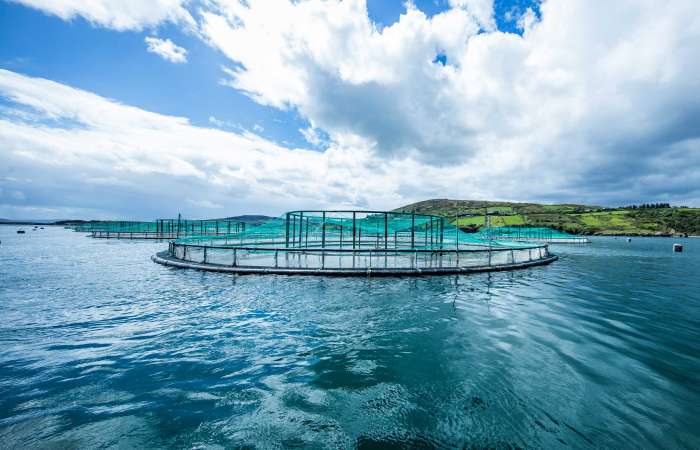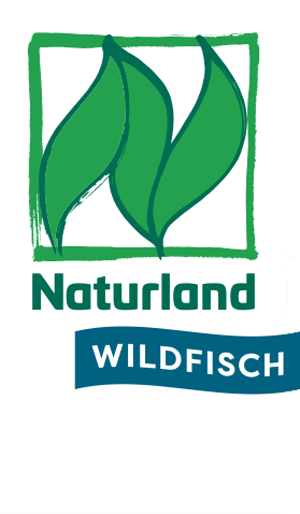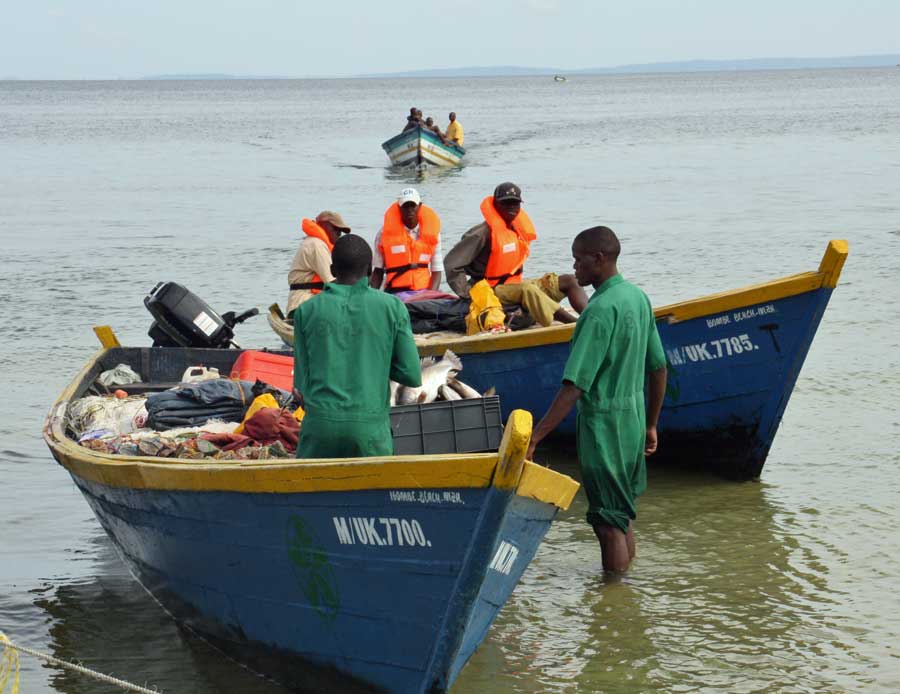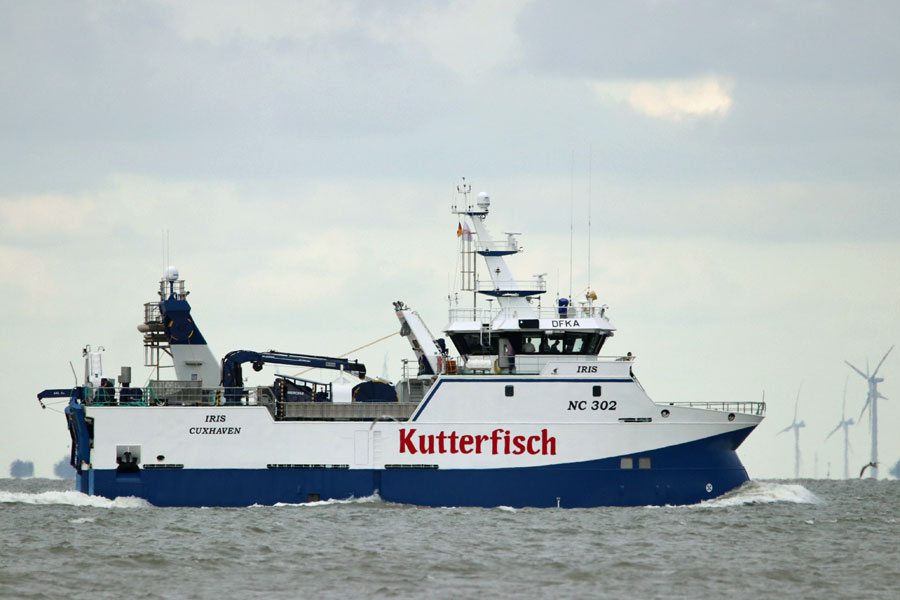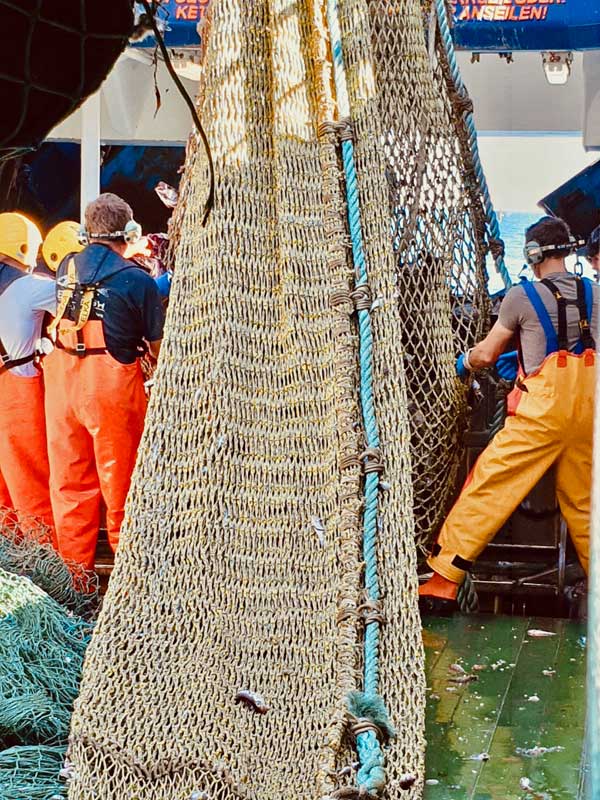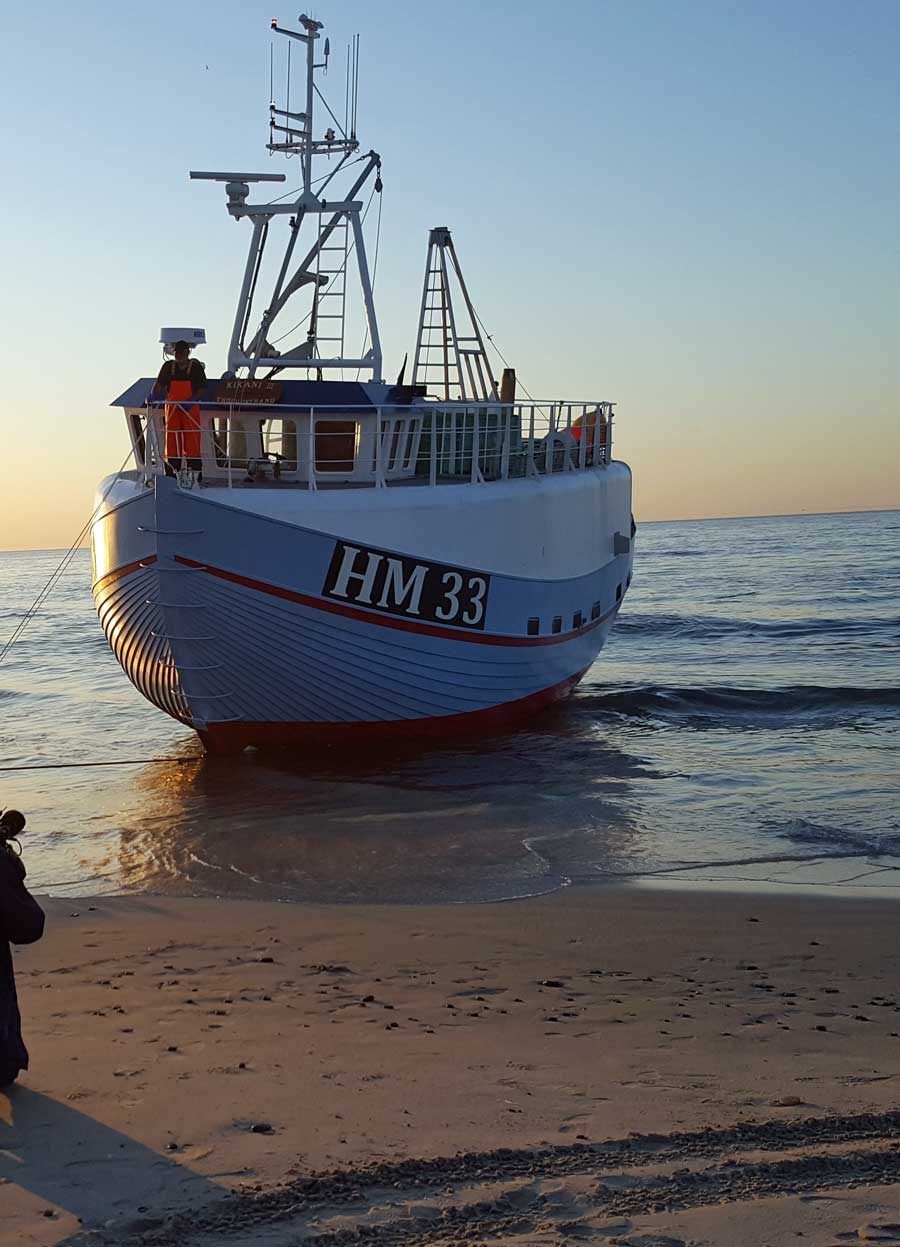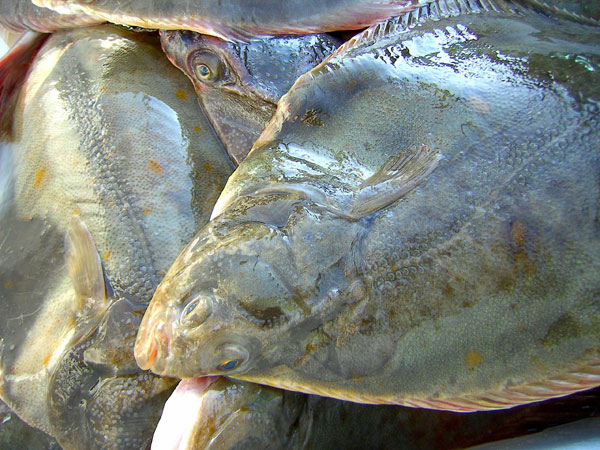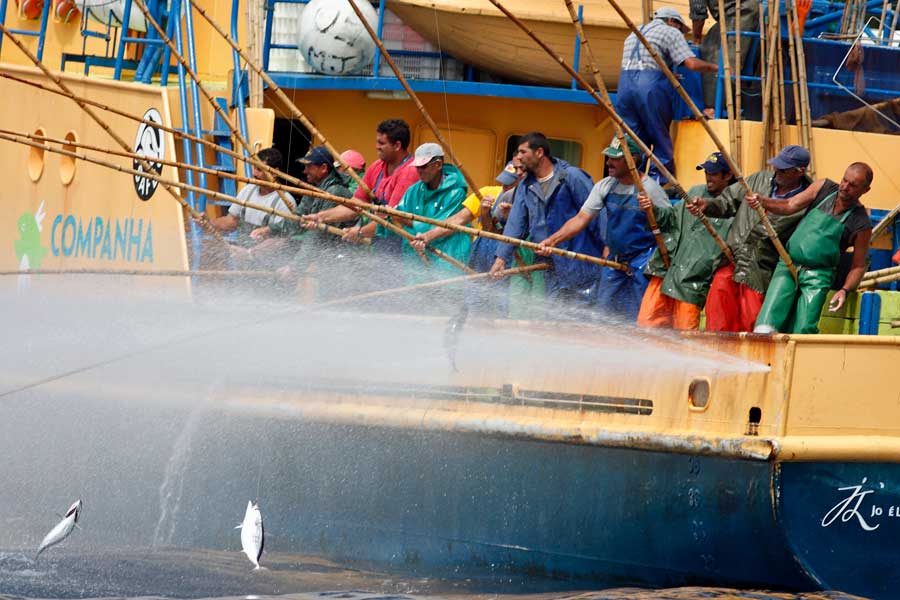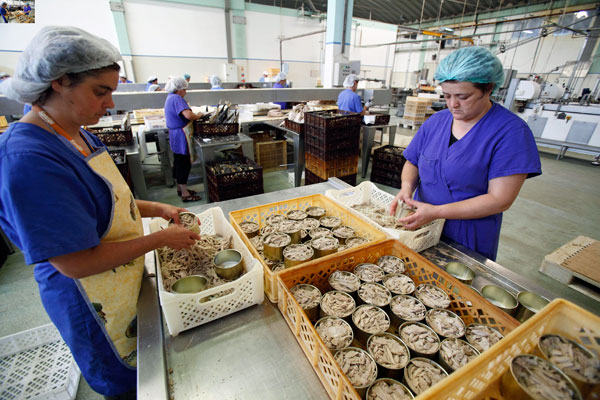Organic aquaculture
Fish & Seafood
ORGANIC AQUACULTURE – THE WAY FORWARD
Fish, crustaceans, mussels and algae are not only tasty and good for our health, they are also an indispensable means of feeding our growing global population. The key is to ensure that the methods used to produce them are kind to animals, humans and the environment. Naturland began setting the parameters for this sector in 1996 by publishing its ‘Standards for organic aquaculture’.
Aquaculture can be a burden on the natural environment and have a negative effect on animal welfare. What’s more, the origins of the feed used in aquaculture are often problematic and lacking in transparency. To that end, Naturland developed its first standards on organic aquaculture in 1996 and constantly adjusts them based on the latest knowledge in consultation with scientists and practitioners.
Today, we certify over a dozen different fish species worldwide. In addition to domestic trout and Atlantic salmon, we also certify mussels, warm water prawns, sea bass, sea bream, pangasius, macroalgae (seaweed) and, more recently, microalgae.
The Naturland standards regulate the entire fish and seafood production process from rearing to processing. Rigorous inspections, the use of certified, organic ingredients and avoidance of sensitive additives are a matter of course.
OUR ORGANIC AQUACULTURE ESTABLISHMENTS...
-
Choose their location carefully, protecting aquatic environments and surrounding ecosystems.
-
Ensure they care for their stocks with compassion and keep stocking rates low.
-
Refrain from using genetic engineering, chemical additives, growth stimulants and hormones.
-
Use certified organic feed and fulfil strict conditions when using medicines.
-
Test their water, sediment, feed, and end products regularly.
-
Commit to gradually regenerating former mangrove forests.
-
Finally, provide their employees around the world with high social standards.
What we stand for
Your Contact
STANDARDS: HIGH STANDARDS, ABOVE AND BEYOND EU ORGANIC
The Naturland Standards for Organic Aquaculture encompass fish farming requirements for a wide range of species. In addition to the general standards for organic aquaculture, there are also additional species- and system-specific farming requirements that apply to each species.
Certified Naturland farms from around the world are obligated to comply with our standards for social responsibility. In the interests of both animals and nature, we place stricter limits on stocking densities. We also require regular testing to be carried out on water, sediment, feed and end products. The use of antibiotics and traditional medicines on prawns is prohibited, and their use on fish is strictly limited. Prawn farmers are committed to gradually regenerating former mangrove forests.
THE PRODUCTION OF NATURLAND-CERTIFIED FISH FEED IS REGULATED AS PART OF OUR FEED PROCESSING STANDARDS
-
Naturland Standards Processing - aquaculture products and products from sustainable capture fishery
-
Naturland certified aqua-feed producers
NATURLAND AQUACULTURE – A DIVERSE RANGE
The concept of organic aquaculture in line with Naturland requirements is as logical as it is compelling. Naturland producers in over twenty different countries farm according to these standards in ponds, net cages and on ropes. From trout in Germany, salmon and mussels in Ireland, prawns in Ecuador and Vietnam, to pangasius in Vietnam.
-
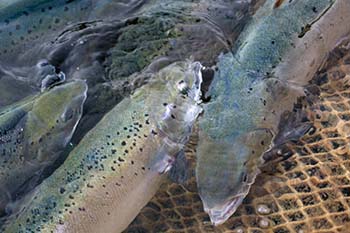
Salmon
- Name: Atlantic salmon
- Scientific name: Salmo salar
- Farming method: Marine net cages
- Production cycle: 26–32 months, 3–6 kg
- Produced in: Ireland
Did you know?
While conventional, intensive fish farming often leads to environmental issues, Naturland regulates the protection of surrounding ecosystems as part of its standards for organic aquaculture. Our fish farms are committed to limiting the amount of nutrients they introduce into the environment and to providing evidence of regular environmental testing.
Efficient feed conversion is also good for sustainability. In fact, salmon utilises its feed significantly better than cattle, pigs and even poultry. Naturland salmon are only fed certified fish feed, which contains fish meal and fish oil that originate from waste fish products from the food production industry. The food products themselves must also be derived from sustainable fishing or organic aquaculture. The use of synthetic dyes that are typically used on conventionally farmed salmon to obtain its distinct colour is not allowed.
Naturland farmers take a ‘"prevention is better than cure" approach when it comes to fish health. Naturland salmon have significantly fewer fish parasites as a result of lower stocking densities and the use of "cleaner fish", among other measures. Naturland farms also ensure animal welfare is maintained during transport and slaughter.
For more information on feed, animal health, environmental protection and sustainability, and for a table that compares conventional farming, EU organic, Naturland and the advantages of organic farming, please see our “Naturland trout and salmon” fact sheet.
-
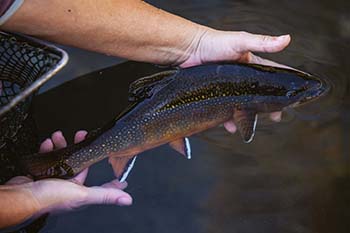
Trout
- Name: Sea bream, gilt-head bream
- Scientific name: Sparus aurata
- Farming method: Marine net cages
- Production cycle: 18–30 months, 300–800g
- Produced in: Croatia, Greece
Did you know?
Whether it's brown trout from Germany or its sister-species, the slightly larger rainbow trout from America, Naturland stipulates that both must be raised using natural methods that have a low environmental impact. And that’s not all – the standards also specify that fish welfare must be respected, and fish feed certified as organic.
Naturland trout must also be given adequate space in their natural habitat. Our strict standards allow no more than 20 kilograms of fish per cubic metre of water. For comparison, the EU regulation on organic production allows 25 kilograms of fish.
Naturland also includes salmon trout in its certification scheme. Although not a species in its own right, it is a large rainbow trout, whose red-coloured flesh is the result of a natural colourant in its feed.
For more information on feed, animal health, environmental protection and sustainability, and for a table that compares conventional farming, EU organic, Naturland and the advantages of organic farming, please see our “Naturland trout and salmon” fact sheet.
-
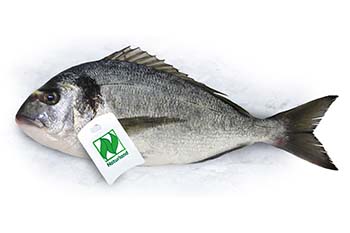
Sea Bream
- Name: Sea bream, gilt-head bream
- Scientific name: Sparus aurata
- Farming method: Marine net cages
- Production cycle: 18–30 months, 300–800g
- Produced in: Croatia, Greece
Did you know?
Sea bream has been a valued part of our diets since ancient times. Nowadays, the fish, which originates from the Mediterranean, is almost exclusively produced in aquaculture systems. Our Naturland farms are situated in the clear waters off the Croatian and Greek coasts, which enables them to meet the strict requirements for water quality set out in our Naturland standards.
The fish are kept in generously-sized net cages. The Naturland standards permit no more than 10 kg of sea bream per cubic metre of water. As well as benefiting the fish, this also benefits the seabed. Not only that, Naturland also stipulates regular inspections of the benthos underneath the enclosures.
The name "gilt-head bream" comes from the bright golden stripe underneath the fishes’ eyes. The brighter it shines, the fresher the fish.
-
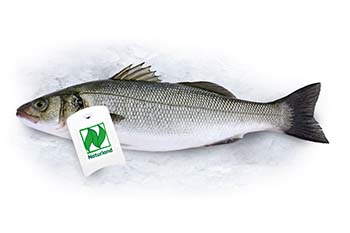
Sea Bass
- Name: European sea bass
- Scientific name: Dicentrarchus labrax
- Farming method: Marine net cages
- Production cycle: 18–24 months, 300–800g
- Produced in: Croatia, Greece
Did you know?
Wild sea bass stocks in both the Atlantic and the Mediterranean are deteriorating. Fortunately, however, these delicate fish are also produced by Naturland aquaculture establishments.
Sea bass are kept in generously-sized net cages in the clear waters off the coasts of Croatia and Greece. The Naturland standards permit no more than 10 kilograms of fish per cubic metre of water. This is the ideal stocking density for ensuring healthy fish.
As predatory fish, sea bass require a high proportion of fish in their diet. Luckily, in Naturland aquacultures this fish component is derived from waste fish from the food production industry. -
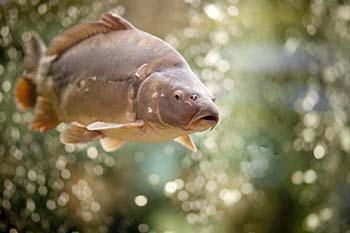
Carp
- Name: Carp
- Scientific name: Cyprinus carpio
- Farming method: Extensive pond culture
- Production cycle: 24–36 months, 1.5 kg
- Produced in: Germany
Did you know?
Extensive cultivation in ponds, as prescribed by Naturland, is a natural method of fish farming – and it's not just carp that feel at home in ponds. Pond landscapes are also hotspots for biodiversity and are often used as substitute biotopes for lost floodplains and other wetland areas.
Naturland carp obtain up to 50% of their food from the ponds themselves. If plant-based proteins such as lupins and broad beans are fed as a supplement, they must be organically grown too. Fish meals and fish oils are completely prohibited. As such, Naturland carp boast an impressive eco-balance. They're also delicious. Because they are farmed extensively, they have firm flesh and their fillets have a fat content of less than ten per cent.
-
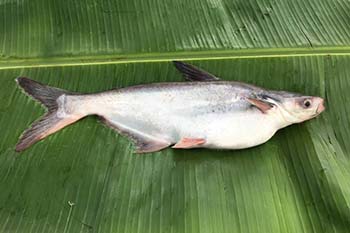
Pangasius
- Name: Pangasius, Mekong giant catfish
- Scientific name: Pangasius sp.
- Farming method: Pond culture
- Production cycle: 12 months, 1 kg
- Produced in: Vietnam
Did you know?
Naturland Pangasius are bred in natural pond systems in the Vietnamese Mekong Delta. The conventional farms in this region are heavily criticised for their intensive farming methods, excessive antibiotic use and problematic working conditions.
The Naturland standards, however, allow a maximum of just 10 kg of fish per cubic metre of water. Antibiotics may only be used in case of illness, not as a preventive measure. And even then, they can only be used as much as is strictly necessary. Fish that have been treated with antibiotics are not allowed to be sold as Naturland fish. Naturland fish farmers focus on maintaining fish health through low stocking densities, high water quality and organic feed.
For those working on the Pangasius farms in the Mekong Delta, the Naturland standards ensure high social standards that directly improve their quality of life.
-
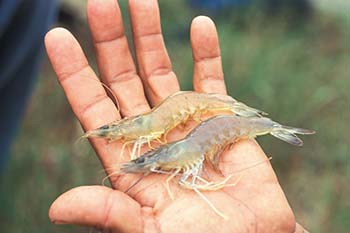
Prawns
- Name: Black Tiger (Sea Tiger), White Tiger (Whiteleg prawns, King prawns) and
other species of prawn - Scientific name: Penaeus monodon, Penaeus vannamei, Penaeus merguiensis, Metapenaeus ensis
- Farming method: Extensive and semi-intensive pond culture
- Production cycle: 3–6 months, 10–25 g
- Produced in: Ecuador, Peru, Honduras, Vietnam, India, Bangladesh, Indonesia
Did you know?
Trawling for wild prawns endangers stocks and is problematic due to the high quantities of by-catches. Prawn farming in aquaculture systems began as an alternative method in the 1970s. To make way for this fast-growing sector, large areas of valuable mangrove forest were cleared – an environmental and social catastrophe that Naturland has been working to combat since it introduced its first standards for organic prawn farming in 1999.
The standards commit Naturland farmers to reforesting a large proportion of former mangrove forests. They are also subject to strict limits with regards to stocking densities and the use of organic feed and fertilisers to ensure that the pond ecosystem is always in balance with its surroundings. Naturland verifies these conditions through regular environmental testing.
Naturland farmers take a "prevention is better than cure" approach when it comes to the health of their prawns. The use of antibiotics and other chemotherapeutic medicines is prohibited. Naturland also prohibits eyestalk manipulation or ablation for reproductive purposes – something that is commonly practised in conventional prawn farming – on animal welfare grounds. The prawns’ offspring must be produced completely naturally.
For more information on prawn feed, prawn health, environmental protection, and sustainability, please see our “Naturland prawns” fact sheet.
- Name: Black Tiger (Sea Tiger), White Tiger (Whiteleg prawns, King prawns) and
-
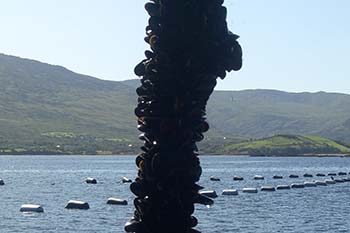
Mussels
- Name: Common mussel
- Scientific name: Mytilus edulis
- Farming method: Ropes and rafts
- Production cycle: 12–24 months, 8–12 g
- Produced in: Ireland
Did you know?
Mussel farms are already extremely sustainable. After all, instead of polluting the seawater, mussels actually filter it. Not only that, Naturland goes one step further and ensures that the seabed is also protected. Naturland mussels are grown suspended from ropes or in net tubes that float freely in the water column held by buoys. During harvest, the mussels simply need to be removed from the ropes or net tubes rather than being scraped off the seabed.
The Naturland standards for mussel farms also stipulate the highest level of water quality so that consumers can enjoy their mussels with a clear conscience. This has multiple benefits, not least for their flavour.
And by the way, Naturland mussels aren’t just sold live. Some of the mussels are also cooked in their own shell using a special process and then frozen. This means that they retain their full flavour and texture.
-
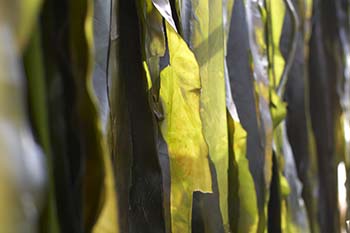
Macroalgae
- Name: Green algae, brown algae, red algae
- Scientific name: Chlorophyceae, Phaeophyceae, Rhodophyceae
- Cultivation system: Wild harvesting
- Production cycle: Continuous
- Produced in: France, Spain
Did you know?
Macroalgae are globally recognised as the number one producer of oxygen. There are countless different species and they come in all sorts of shapes and sizes. Macroalgae can grow up to 100 metres in length and feature a diverse range of flavours. Various types of algae have come to be appreciated in traditional cuisines from around the world. For example, wakame, kombu and nori have always been widely used in traditional Japanese and Korean recipes, and dulse, samphire and sea lettuce were prominent ingredients in Celtic dishes.
Naturland-certified algae grow with little or no input from humans. The algae are harvested using eco-friendly, sustainable methods. The Naturland standards stipulate that only as much algae should be harvested as can be regrown. Macroalgae are becoming ever more prominent within the food industry. For instance, they can be found in both sushi and haute cuisine as well as in gelling agents and cosmetics. Macroalgae contain a high concentration of key minerals, trace elements and vitamins. They're also high in protein!
-
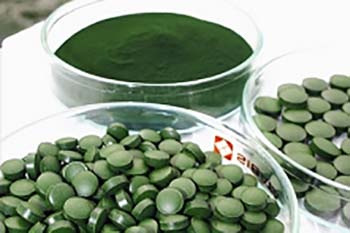
Microalgae
- Name: Spirulina, chlorella
- Scientific name: Spirulina sp., Chlorella sp.
- Cultivation system: Open and closed systems
- Production cycle: 3–4 weeks
- Produced in: India, Taiwan, China
Did you know?
Microalgae are one of the oldest life forms on earth. At Naturland, these tiny organisms are cultivated in open systems according to strict organic rules. Most farmers choose to cultivate the spirulina and chlorella genuses because they contain high concentrations of beneficial nutrients. After harvesting, the microalgae are processed into a powder that is then either mixed into food products or sold in pure tablet form. Consumers value microalgae essence, as it is thought to be rich in omega 3 fatty acids, chlorophyll, B vitamins and trace elements.
Naturland-certified microalgae are unique because producers are only allowed to apply organically produced, plant-based nutrients. This means that aquaculture establishments growing Naturland-certified microalgae can offer a viable and nutritious vegan food product.
Steps to your certification
-
INFORMATION EXCHANGE
The first step for both parties – fisheries and processors who express an interest in becoming certified and Naturland – is to have a conversation and exchange information. Naturland provides detailed information on its joint initiatives as well as the technical and formal aspects of certification. Naturland collects the relevant farm data via an initial data entry form and checks the suitability for conversion.
-
FIRST VISIT
If the farm meets all the requirements on paper, a Naturland employee will visit the farm to get an idea of the aquaculture and processing operations. At the same time, a conversion plan is drawn up together in order to prepare for the desired certification.
-
INSPECTION
AND CERTIFICATIONOnce the enterprise and Naturland have agreed on future cooperation, Naturland issues an inspection order to an independent inspection body. Before the inspection date, however, the operator must have concluded a contract with this inspection body. The inspection covers all operational processes: hatchery, rearing and slaughter as well as management, incoming goods, documentation, processing and outgoing goods. Depending on the size of the enterprise, the inspection may take several days.
On the basis of the inspection report, Naturland decides whether the enterprise is to be certified. The inspection takes place every year. Accordingly, certification is renewed annually. -
COSTS
The costs incurred by the enterprise result from the following items:
the expenses and travel costs of the initial visit, the annual Naturland membership fee, the inspection costs, which may vary depending on the inspection body, and the licence fee for the use of the trademark. The basis is a sub-licence agreement which the enterprise concludes directly with Naturland Zeichen GmbH.




